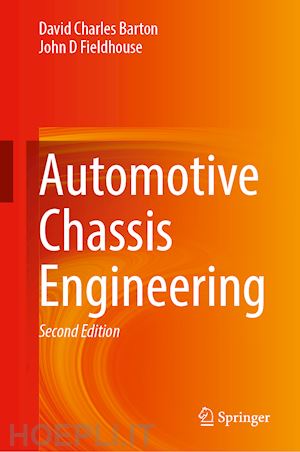Written for students and practising engineers working in automotive engineering, this book provides a fundamental yet comprehensive understanding of chassis systems and requires little prior knowledge on the part of the reader. It presents the material in a practical and realistic manner, using reverse engineering as a basis for examples to reinforce understanding of the topics. The specifications and characteristics of vehicles currently on the market are used to exemplify the theory’s application, and care is taken to connect the various topics covered, so as to clearly demonstrate their interrelationships. This second edition is fully updated and revised throughout and includes a new chapter on vehicle deceleration behaviour.
The book opens with a chapter on basic vehicle mechanics, which includes the forces acting on a vehicle in motion, assuming a rigid body. The new chapter on vehicle deceleration behaviour introduces the basic concepts of a conventional foundation braking system before considering means of optimising the deceleration performance of any wheel-braked vehicle based on the tyre-road adhesion characteristics. The next chapter focuses on vehicle dynamics by considering suspension systems and how the important components of the system, the tyres, linkages, springs, dampers, etc., interact to give the required peformance characteristics for the vehicle. The book then proceeds to a chapter on steering systems, which provides readers with a firm understanding of the principles and forces involved under static and dynamic loading. The chapter on chassis structures and materials outlines analysis tools (typically, finite element analysis) and design features that are used to reduce mass and increase occupant safety in modern vehicles. The final chapter on noise, vibration and harshness (NVH) includes a basic overview of acoustic and vibration theory and makes use of extensive research investigations and practical experience asa means of addressing NVH issues. In all subject areas, the authors take into account the latest trends, anticipating the move towards electric vehicles, on-board diagnostic monitoring, active systems and performance optimisation. The book features a number of worked examples and case studies based on recent research projects. All students, including those on Master level degree courses in automotive engineering, and professionals in industry who want to gain a better understanding of vehicle chassis engineering, will benefit from this book.











